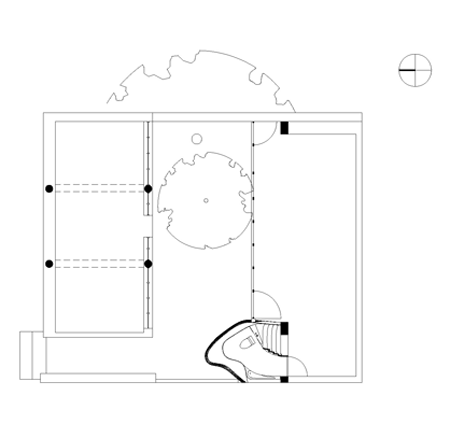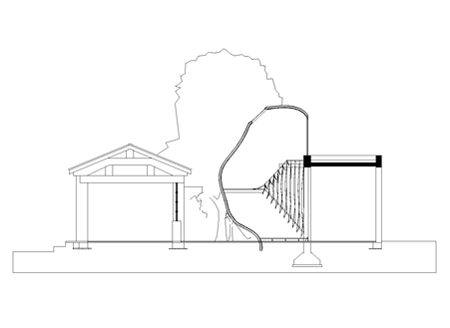
Hutong Bubble 32 by MAD
Beijing architects MAD have completed the first of a series of proposed bubble-shaped additions to traditional hutongs in the city.
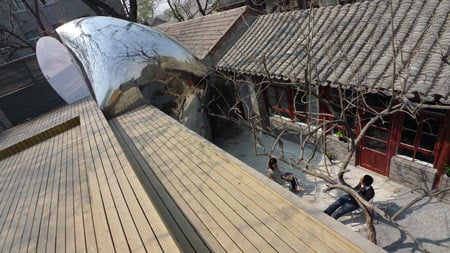
The first bubble, called Hutong Bubble 32, provides a toilet and staircase in a hutong - a traditional but basic housing typology based around a courtyard that is under threat from rapid development in Beijing.
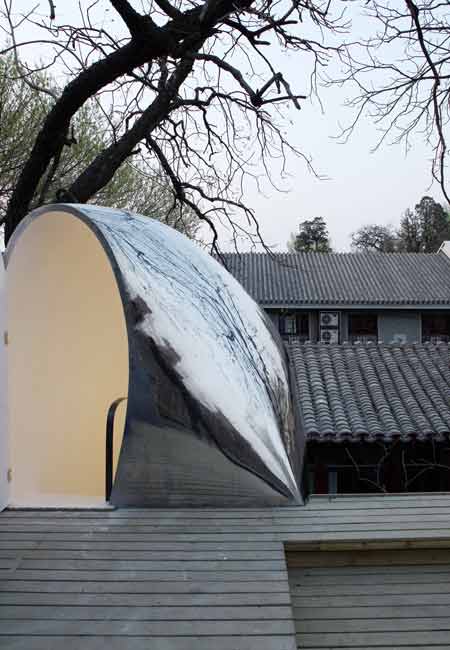
MAD's Beijing Hutong Bubble project proposes adding similar bubbles to many of the city's hutongs to improve living conditions while preserving the vernacular urban fabric.
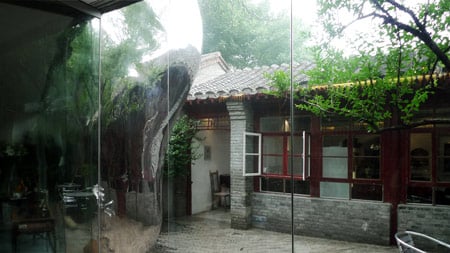
Here's some more information from MAD:
--
Beijimg Hutong Bubble by MAD
MAD’s proposal for the future Beijing 2050 was first revealed at its exhibition MAD IN CHINA in Venice during the 2006 Venice Architecture Biennale.

Beijing 2050 imagined three scenarios for the future of Beijing―a green public park in Tiananmen Square, a series of floating islands above the city’s CBD, and the “Future of Hutongs,” which featured metallic bubbles scattered over Beijing’s oldest neighborhoods.
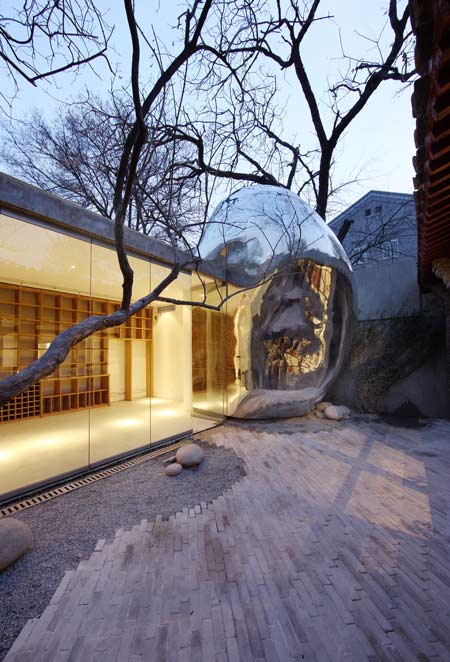
Three years later, the first hutong bubble has appeared in a small courtyard in Beijing.

China’s rapid development has altered the city’s landscape on a massive scale, continually eroding the delicate urban tissue of old Beijing. Such dramatic changes have forced an aging architecture to rely on chaotic, spontaneous renovations to survive the ever-changing neighborhood.
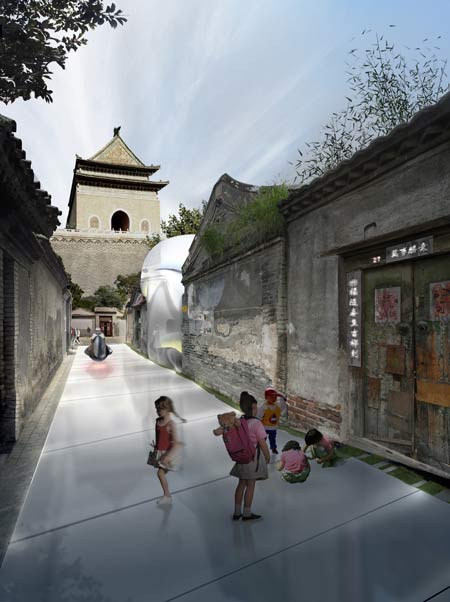
In addition, poor standards of hygiene have turned unique living space and potential thriving communities into a serious urban problem. Hutongs are gradually becoming the local inhabitants’ dumpster, the haven for the wealthy, the theme park for tourists.
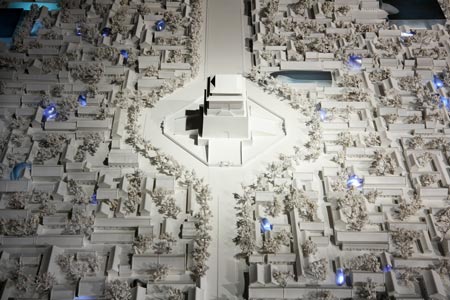
The self-perpetuating degradation of the city’s urban tissue requires a change in the living conditions of local residents. Progress does not necessarily call for large scale construction – it can occur as interventions at a small scale.
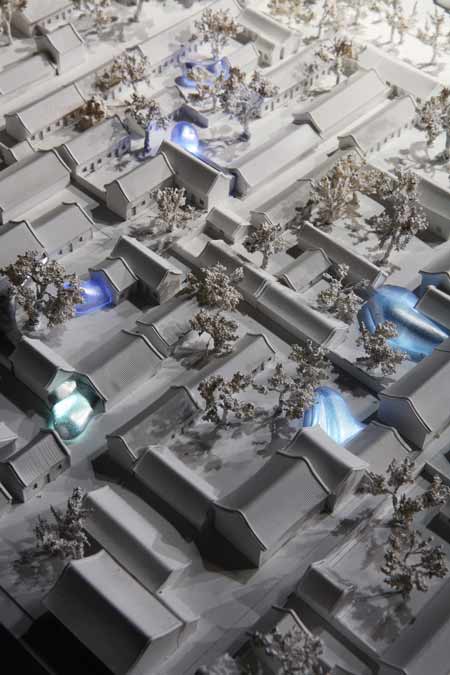
The hutong bubbles, inserted into the urban fabric, function like magnets, attracting new people, activities, and resources to reactivate entire neighborhoods. They exist in symbiosis with the old housing.
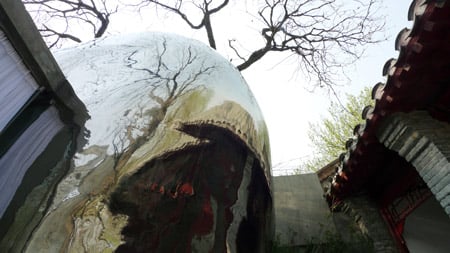
Fueled by the energy they helped to renew, the bubbles multiply and morph to provide for the community’s various needs, thereby allowing local residents to continue living in these old neighborhoods. In time, these interventions will become part of Beijing’s long history, newly formed membranes within the city’s urban tissue.
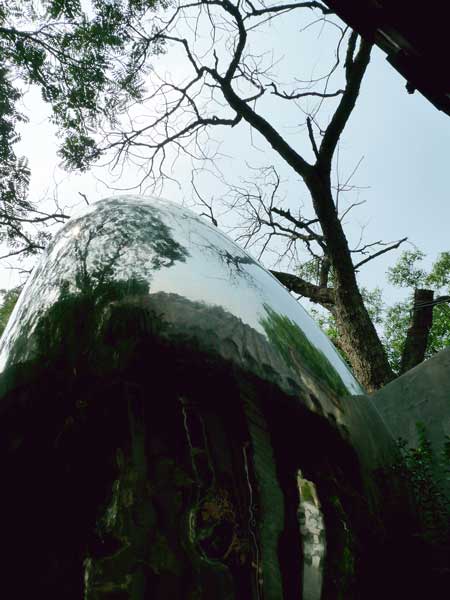
Unexpectedly, a manifestation of this idealistic vision has sprung up in one of Beijing’s hutongs, just three years after the exhibition. Hutong Bubble 32 provides a toilet and a staircase that extends onto a roof terrace for a newly renovated courtyard house.
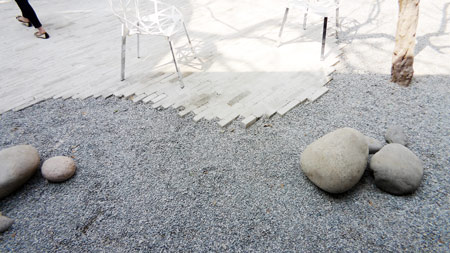
Its shiny exterior renders it an alien creature, and yet at the same time, reflects the surrounding wood, brick, and greenery.
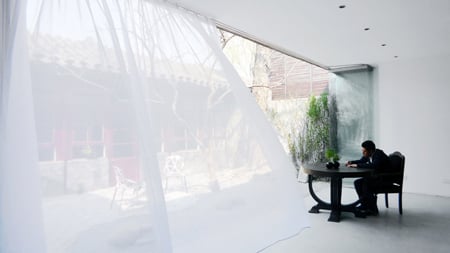
The past and the future can thus coexist in a finite, yet dream-like world.
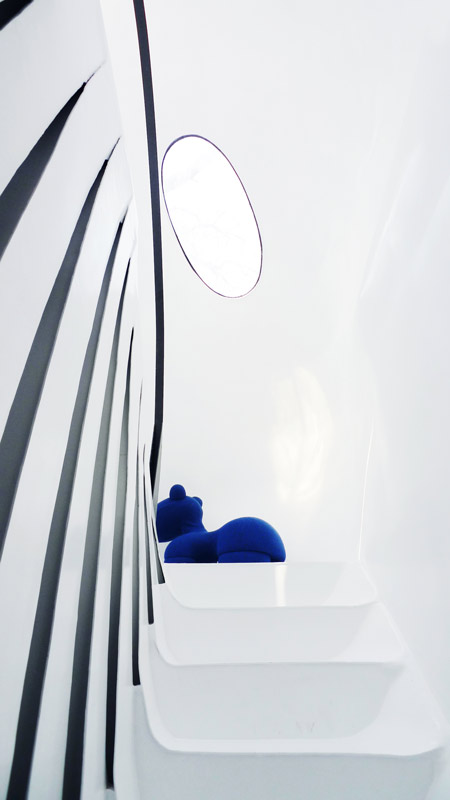
The real dream, however, is for the hutong bubble to link this culturally rich city to each individual’s vision of a better Beijing.
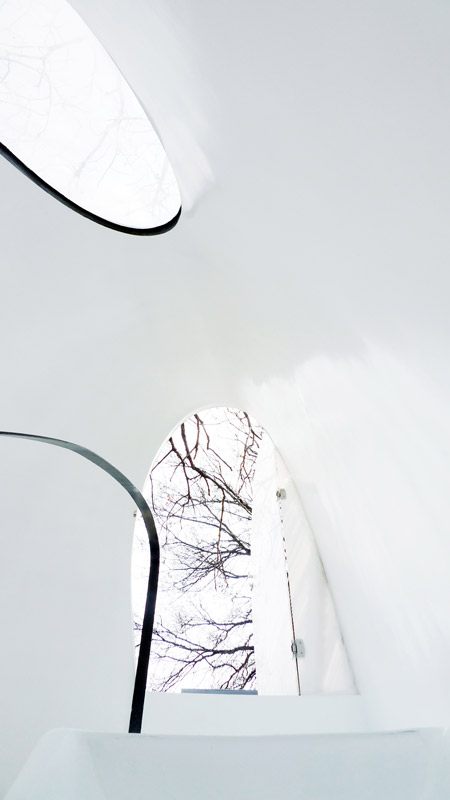
The bubble is not regarded as a singular object, but as a means to initiate a renewed and energetic community. Under the hatchet of fast-paced development, we must always be cognizant of Beijing’s long term goals and the direction of its creativity.
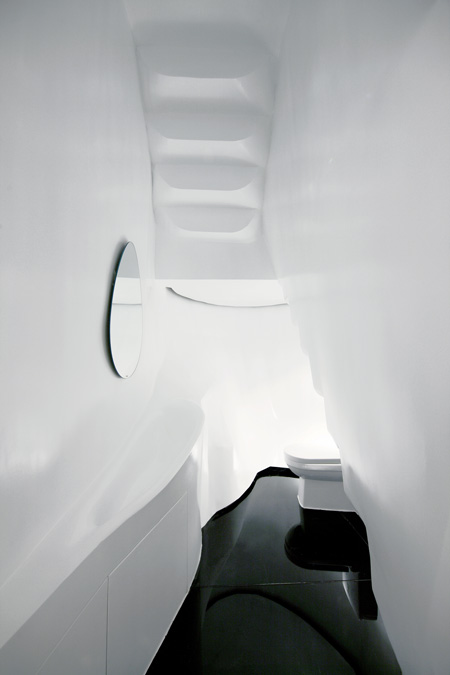
Perhaps we should shift our gaze away from the attraction of new monuments and focus on the everyday lives of the city’s residents.
